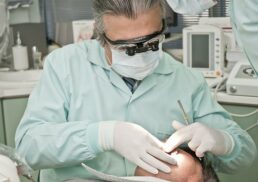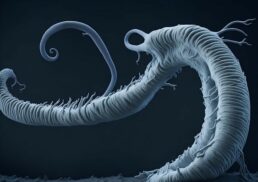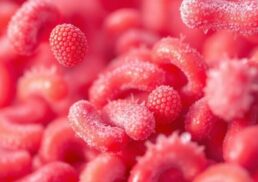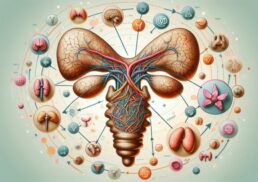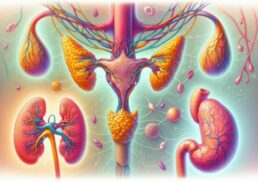How do our bodies function? By exploring the body and organs, and their systems, we’ll understand the essentials of human anatomy. This article covers the key organs, their roles, and how they interact to keep us alive.
Table of Contents
Key Takeaways
The human body functions as a complex network of 78 primary organs organized into systems, each playing a vital role in sustaining life and health.
Vital organs, including the brain, heart, lungs, liver, and kidneys, are essential for survival, performing critical functions like blood filtration, detoxification, gas exchange, and metabolic regulation.
Organ systems such as the circulatory, digestive, nervous, endocrine, integumentary, muscular and skeletal, respiratory, urinary, immune, and reproductive systems collaborate to maintain homeostasis and support various bodily functions.
Understanding Human Organs
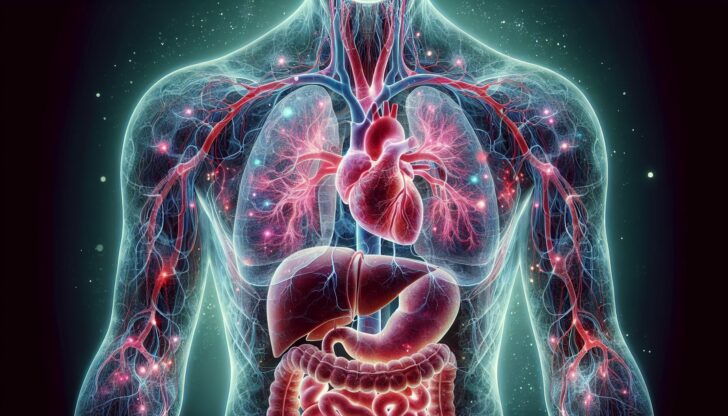
The human body operates as a complex network of organs, functioning together, contributing to our survival. These internal organs are not isolated entities; rather, they exist as part of intricate organ systems that work together to perform specific functions. Think of the human body as a well-coordinated machine where many organs depend on several other body parts for proper functioning.
The human body is comprised of 78 primary organs, all functioning in concert to maintain normal body operations. Some major organs include:
Brain
Heart
Kidneys
Lungs
Liver
Intestines
These organs play pivotal roles in maintaining health and homeostasis. They are often functionally related structures that cooperate to form a whole, demonstrating the interdependence and complexity of human anatomy.
Organ systems are formed by organs, which collectively constitute an individual. Each system has specific roles but must work in concert with others to maintain the body’s balance. For example, the digestive system relies on the circulatory system to transport absorbed nutrients.
As we explore the major organs and their functions, keep in mind the incredible advancements in organ technology, including the potential for growing new replacement organs in the future.
Definition of an Organ
An organ is a group of tissues collaborating to accomplish a particular function. It is a distinct unit with its own structure and purpose. Each organ in the human body contains smaller parts that contribute to its overall function. For instance, the skin, recognized as the body’s largest organ, consists of multiple layers, each with a specific role in protection and sensation.
Whether they are abdominal organs like the liver or accessory organs such as the tongue, organs exist in the human body to perform specific tasks vital to our survival.
Learn more, visit Organ | Definition, Types, & Facts.
Vital Organs
Vital organs are indispensable for human survival, with any malfunction posing a swift threat to life. The five vital organs that play crucial roles in maintaining the body’s functions are:
Brain
Heart
Lungs
Kidneys
Liver
Each of these organs plays a critical role in maintaining the body’s internal environment. For instance, the kidneys, which are bean-shaped organs located on either side of the lower part of the rib cage, filter blood and remove waste products while balancing fluid levels in the body.
The human body is made up of several vital organs, each with its own important function:
The brain: processes information, thoughts, and emotions, and coordinates all bodily functions.
The heart: pumps blood through a network of blood vessels, ensuring that oxygen and nutrients are delivered to cells while waste products are removed.
The lungs: facilitate gas exchange, providing oxygen to the blood and expelling carbon dioxide.
The liver: a vital organ in the digestive system, performs essential metabolic functions, including detoxification and protein synthesis.
Each of these organs is indispensable, highlighting the importance of understanding and caring for our vital organs.
Major Organs and Their Functions
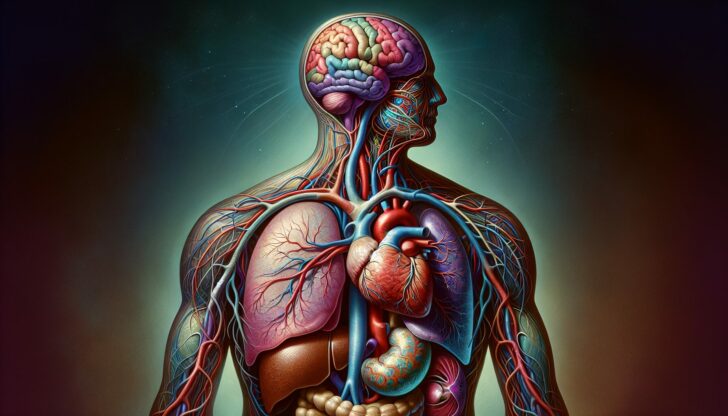
The human body is composed of multiple major organs, each performing unique functions vital for survival. These internal organs perform specific functions that are crucial to maintaining life and health.
We will now focus on the functions of the brain, heart, lungs, liver, and kidneys—the major organs that facilitate the efficient operation of our bodies.
Brain
Serving as the body’s control center, the brain, a vital organ in the central nervous system, processes nerve impulses, thoughts, emotions, and physical sensations. The brain consists of three main parts: the cerebrum, the cerebellum, and the brainstem. Each part plays a crucial role in controlling different functions of the body. Each part has specialized functions that contribute to the overall operation of the body.
The brain is divided into three main parts:
The cerebrum, the largest part, is responsible for cognitive functions such as thinking, memory, and voluntary movements.
The cerebellum coordinates smooth movements and motor control.
The brainstem, comprising the midbrain, pons, and medulla, regulates vital autonomic functions like breathing and heart rate.
The midbrain contains structures like the oculomotor nerves and the superior and inferior colliculi, which play roles in sensory and motor functions. The pons acts as a relay station, transmitting information between the cerebellum and the rest of the brain. The medulla, located at the base of the brainstem, controls autonomic functions such as respiratory and cardiovascular regulation.
Together, these components make the brain the most complex and vital organ in the human body.
Heart
Situated in the thoracic cavity, medial to the lungs and slightly towards the left, the heart’s primary function is to pump blood throughout the circulatory system. This vital organ consists of four chambers: two atria and two ventricles. The heart pumps blood through a network of arteries, veins, and capillaries, ensuring that oxygen and nutrients are delivered to cells and waste products are removed.
Its rhythmic contractions maintain blood pressure and circulation, sustaining life and health.
Lungs
The lungs, soft, air-filled organs situated on either side of the chest within the thoracic cavity, play a key role in the respiratory system. They facilitate gas exchange, oxygenating the blood and expelling carbon dioxide. The hilum, located on the lungs’ medial border, accommodates structures essential for lung function, such as blood vessels and airways.
This vital organ works tirelessly to ensure that our body receives the oxygen it needs to function.
Liver
Weighing between 1.3 and 1.5 kilograms, the liver is the largest internal solid organ, situated in the upper right section of the abdomen. It performs over 500 functions, including:
Energy production
Metabolism
Blood clotting
Detoxification
The liver’s blood supply comes primarily from the portal vein and the hepatic artery.
This vital organ also plays a role in synthesizing hormones and proteins, making it an indispensable component of the digestive system.
Kidneys
Located on either side of the spine below the ribs, the kidneys are vital organs in the human body. They perform several important functions, including:
Filtering blood and removing waste products
Balancing fluid levels to maintain homeostasis
Absorbing nutrients
Balancing acids and bases
Stimulating the synthesis of red blood cells.
These bean-shaped organs ensure that harmful substances are removed from the body, playing a vital role in the excretory system.
Organ Systems in the Human Body
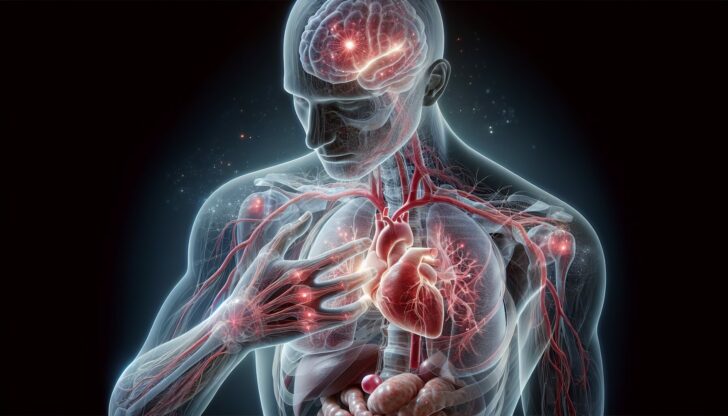
Multiple organ systems in the human body collaborate to maintain homeostasis and carry out crucial functions. Each organ system comprises various organs that collectively support different bodily functions. Let’s explore some of the key organ systems and their roles in sustaining life.
Circulatory System
Comprising the heart, arteries, veins, capillaries, and blood, the circulatory system is instrumental in delivering oxygen and nutrients to cells while eliminating waste products. The heart functions as a pump, circulating blood throughout the body and ensuring that every cell receives the necessary resources to function. This system also transports hormones and helps regulate body temperature.
Digestive System
The digestive system is responsible for processing and breaking down food into nutrients for the body’s absorption and use. It includes the gastrointestinal (GI) tract, which consists of:
The mouth
The esophagus
The stomach
The small intestine
The large intestine
The stomach produces enzymes and gastric acids to degrade food, while the small intestine absorbs nutrients and passes them into the bloodstream.
Waste products are then moved to the large intestine, where water is absorbed, and stool is formed.
Nervous System
By transmitting messages through electrical impulses, the nervous system orchestrates and directs bodily functions. It includes the central nervous system (CNS), composed of the brain and spinal cord, and the peripheral nervous system (PNS), which interacts with muscles and conveys sensory information. The CNS processes information and sends signals to the PNS, which executes motor functions and gathers sensory data from the body’s periphery.
The spinal cord, terminating at vertebral level L1/L2 in adults, along with the brain, is protected by three meningeal layers: the dura mater, arachnoid mater, and pia mater. The cauda equina, a bundle of nerves at the end of the spinal cord, floats in cerebrospinal fluid within the vertebral canal. This complex system ensures that the body responds appropriately to internal and external stimuli.
Endocrine System
The endocrine system, composed of glands like the pituitary, thyroid, and adrenal glands, produces hormones that regulate various bodily functions, including:
growth
metabolism
reproduction
development
The hypothalamus, located in the brain, releases hormones that stimulate the pituitary gland.
The thyroid gland, located in the neck, produces thyroid hormones that regulate metabolism. Insulin is produced by the pancreas and is responsible for removing glucose from the blood. It then converts the glucose into energy.
The Integumentary System
Incorporating the skin, hair, nails, and associated glands, the integumentary system acts as the body’s primary defense line against external factors. The skin, the largest external organ, covers about 19 to 20 square feet of the body surface. It performs several important functions, including:
Protecting the body from pathogens
Regulating body temperature
Synthesizing Vitamin D
Providing sensory input
This system plays a crucial role in maintaining overall health and well-being.
Skin Layers
The skin is composed of three main layers:
The epidermis, which consists of stratified squamous epithelial cells and breaks down into four to five layers.
The dermis, which is subdivided into the papillary and reticular layers. It provides structural support to the epidermis and contains blood and lymph vessels, nerves, sweat glands, and hair follicles.
The hypodermis, or subcutaneous layer, which consists of loose areolar and adipose tissue. It connects the skin to underlying structures such as muscles and provides cushioning and insulation.
Accessory Structures
Accessory structures of the integumentary system include hair, nails, and glands. Hair growth occurs in phases: anagen (growth phase), catagen (non-proliferative phase), and telogen (resting phase). Nails protect the fingers and toes, enhancing precision and sensation. Sebaceous glands secrete sebum, an oily substance that forms a protective layer on the skin.
These structures play vital roles in protecting the body and maintaining overall health.
The Muscular and Skeletal Systems
Working in conjunction, the muscular and skeletal systems provide support and protection to the body, facilitating movement and preserving structural integrity. The human skeleton is divided into the axial skeleton (skull, vertebral column, and thoracic cage) and the appendicular skeleton (pectoral girdle, upper and lower limbs, and pelvic girdle).
The skeletal system provides the framework for the body, supporting and protecting internal organs.
Types of Muscles
The human body consists of three types of muscles:
Skeletal muscles: voluntary and striated, attaching to bones to control conscious movement.
Smooth muscles: involuntary and non-striated, found in hollow organs such as the stomach and intestines, facilitating functions like digestion.
Cardiac muscles: involuntary and striated, specialized for pumping blood in the heart.
Each muscle type plays a critical role in the muscular system.
Bone Structure
Bones protect internal organs, support body weight, and give shape to the body. They also play a crucial role in producing blood cells within the bone marrow. Bones are comprised of two main types of tissue: a dense outer layer called compact bone and a spongy inner layer known as cancellous bone. The compact bone provides strength and structure, while the cancellous bone, with its trabecular structure, supports the production of blood cells and houses bone marrow.
The skeletal system’s integrity is maintained through the continuous remodeling process, where old bone tissue is replaced with new tissue. This dynamic process ensures bones remain strong and capable of supporting the body’s structure and functions.
The Respiratory System
Critical for breathing and gas exchange, the respiratory system involves organs that enable oxygen intake and the expulsion of carbon dioxide. The main organs of the respiratory system are:
Lungs
Trachea
Bronchi
Bronchioles
Alveoli
These organs work together to facilitate breathing and gas exchange.
This system plays a vital role in maintaining the body’s oxygen supply and removing waste gases.
Upper Respiratory Tract
The upper respiratory tract includes:
The nose
The mouth
The nasal cavity
The sinuses
The larynx
The nose filters and warms the air we inhale, with mucous membranes trapping foreign particles before the air travels to the lungs. The larynx, or voice box, contains vocal cords and is protected by the epiglottis to prevent food from entering the lungs.
The pharynx serves as a passageway for air from the nasal cavity to the larynx, playing a role in both respiration and digestion.
Lower Respiratory Tract
The lower respiratory tract consists of the trachea, bronchi, and lungs. The trachea, or windpipe, extends below the larynx and is supported by cartilage rings to keep it open. The bronchi branch from the trachea into the lungs and further divide into smaller bronchioles and alveoli for gas exchange. Oxygen moves from the alveoli into the blood through capillaries, while carbon dioxide produced by cells moves into the blood, travels to the lungs, and is exhaled.
The alveoli, tiny air sacs in the lungs, are where the critical process of gas exchange occurs. This efficient system ensures that the body receives the oxygen it needs and expels carbon dioxide, a waste product of metabolism.
The Urinary System
The urinary system aids in the elimination of waste products left in the blood after nutrient utilization for energy. It maintains a balance of chemicals such as potassium and sodium in the body. This system consists of:
Kidneys
Ureters
Bladder
Urethra
These organs work together to filter blood, produce urine, and expel waste from the body.
Kidneys
The kidneys, bean-shaped organs located on either side of the spine below the ribs, play a crucial role in:
Filtering blood
Producing urine
Regulating the acid-base balance
Conserving body fluids
Maintaining overall homeostasis
By removing waste products and balancing fluid levels, the kidneys ensure that harmful substances are eliminated from the body.
Ureters, Bladder, and Urethra
The ureters are narrow tubes that carry urine from the kidneys to the bladder. The bladder, a muscular balloon, stores urine until it is ready to be expelled. The bladder walls relax and expand to store urine and contract to empty it through the urethra.
The urethra then expels the urine from the body, completing the urinary system’s process of waste elimination.
The Immune System
Composed of a complex network of organs, cells, and proteins, the immune system defends the body from infections and protects the body’s own cells. This system is composed of cells, proteins, and entire organs that work together to prevent infections and fight them off.
Key components include the thymus, spleen, tonsils, lymph nodes, and white blood cells.
Lymphatic System
The lymphatic system, part of the immune system, includes lymph nodes and lymph vessels. Lymph nodes act as filters, trapping germs and triggering the production of antibodies in the blood. When people get sick, their lymph nodes may enlarge as they work to fight off infection.
The lymphatic system releases lymphocytes, specialized cells that combat diseases and maintain fluid balance in the body.
White Blood Cells
White blood cells, or leukocytes, are essential components of the immune system that identify and destroy pathogens. There are various types of white blood cells, each with specialized functions in combating infections and diseases. These cells circulate in the blood and lymphatic system, constantly patrolling for signs of infection and abnormal cells.
The diverse types of white blood cells include neutrophils, which are the first responders to infection, and lymphocytes, which include T cells and B cells that target specific pathogens. This intricate defense mechanism ensures that the body can effectively respond to and eliminate threats, maintaining overall health.
Reproductive Systems
A combination of organs and hormone production networks, the reproductive system collaborates to produce life. The primary function of the reproductive system is to enable reproduction and sexual pleasure; in females, it also supports fetal growth.
For natural conception to occur, both male and female reproductive systems must operate correctly.
Male Reproductive Organs
The male reproductive system includes:
Testes
Penis
Epididymis
Vas deferens
Ejaculatory ducts
Urethra
All of these organs are involved in sperm production and delivery. The testes produce sperm, which is transported and stored by the epididymis. The vas deferens transports mature sperm to the urethra in preparation for ejaculation.
The prostate and seminal vesicles contribute fluid to semen, enhancing sperm viability and mobility.
Female Reproductive Organs
The female reproductive system consists of the following organs:
Ovaries: produce eggs and hormones such as estrogen
Fallopian tubes: connect the ovaries to the uterus, facilitating the travel of the fertilized egg to the uterus
Uterus: develops a nutrient-rich lining each month to support a developing fetus
Cervix: the lower part of the uterus that connects to the vagina
Vagina: the canal that leads from the cervix to the outside of the body
Vulva: the external genitalia
These organs work together to facilitate reproduction and the development of a fetus.
The cervix forms a canal that opens to the vagina, acting as the entrance to the womb. The vagina, a muscular tube, connects the cervix to the external opening and plays a role in childbirth and sexual intercourse. These organs work together to support reproduction and maintain female reproductive health.
Summary
In summary, the human body is a remarkable and complex organism with various organs and systems working in harmony to maintain life and health. From the brain, heart, and lungs to the liver, kidneys, and reproductive organs, each plays a crucial role in ensuring our survival. The interconnected nature of these organs and systems highlights the importance of understanding human anatomy and the intricate balance required for optimal health.
As we continue to explore and learn about the human body, we gain a greater appreciation for the marvel of our biological design. By understanding the functions and interdependence of our organs and systems, we can better care for our bodies and promote overall well-being. Remember, the journey of discovering the human body is ongoing, and there is always more to learn and appreciate.
Frequently Asked Questions
What are the 12 organ system of the human body?
The 12 organ systems of the human body are the Integumentary, Skeletal, Muscular, Nervous, Endocrine, Cardiovascular, Lymphatic, Respiratory, Digestive, Urinary, and Reproductive Systems (Female and Male).
What are the five vital organs essential for survival?
The brain, heart, lungs, kidneys, and liver are the five vital organs essential for survival, as they play critical roles in maintaining the body’s internal environment and overall health.
How do the kidneys filter blood and maintain fluid balance?
The kidneys filter waste products from the blood, remove harmful substances, and balance fluid levels to maintain homeostasis, while also absorbing nutrients and stimulating the synthesis of red blood cells.
What is the primary function of the digestive system?
The primary function of the digestive system is to process and break down food into nutrients that can be absorbed and used by the body. This system includes the gastrointestinal (GI) tract, consisting of several organs including the mouth, esophagus, stomach, small intestine, and large intestine.
How does the immune system protect the body from infections?
The immune system protects the body from infections by using a complex network of organs, cells, and proteins, including white blood cells, lymph nodes, the thymus, spleen, and tonsils. Together, these components defend the body against infection while safeguarding its own cells.

